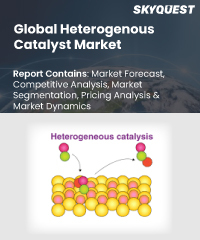
Report ID: SQMIG15G2022

Report ID:
SQMIG15G2022 |
Region:
Global |
Published Date: April, 2024
Pages:
184
|
Tables:
36 |
Figures:
76
Heterogeneous Catalyst Market Drivers
Increasing demand for petrochemicals and chemicals
Growth of end-use industries
Heterogeneous Catalyst Market Restraints
High Cost
Availability of Raw Materials
Our industry expert will work with you to provide you with customized data in a short amount of time.
REQUEST FREE CUSTOMIZATIONWant to customize this report? This report can be personalized according to your needs. Our analysts and industry experts will work directly with you to understand your requirements and provide you with customized data in a short amount of time. We offer $1000 worth of FREE customization at the time of purchase.

Report ID: SQMIG15G2022